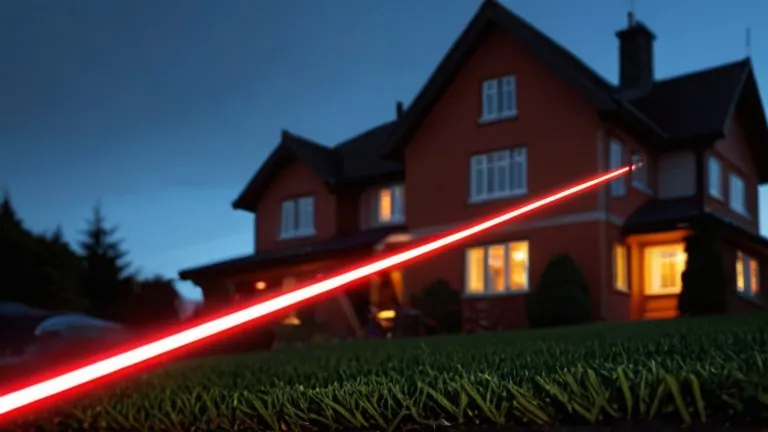8051 Projects
Laser-Based Home Security system using 8051
Introduction and Objective of the Project
The main aim of this project is to design a laser-based security system using an 8051 microcontroller. This system can be used in homes, offices, banks, etc. to provide security. The system consists of a laser source, a microcontroller, and a sensor. The laser source is used to generate a beam of light. The microcontroller is used to control the laser source and the sensor. The sensor is used to detect the beam of light. If the beam of light is interrupted, the microcontroller will generate an alarm.
Advantages and Disadvantages of the Project
The advantage of this system is that it is very cheap and easy to implement. It can also be used in a variety of applications.
The disadvantage of this system is that it can be easily defeated by simply breaking the beam of light.
This project can be improved by adding a second sensor to detect the beam of light. This will make the system more secure.
Application of the Project:
This project can be used in homes, offices, banks, etc. to provide security.
This project can be used to improve the security of existing security systems.
This project can be used to design a new security system.
This project can be used to study the feasibility of using lasers in security applications.
This project can be used to investigate the potential of using lasers in security applications.
This project can be used to design and develop a prototype of a laser-based security system.
Video Demonstration:
Circuits Diagram of the project:
Download the file which includes the Circuit Diagram and PCB Design of the projected Laser based Security System.
Click Here to Download the file.
Code of the Project Laser Based Security System:
// Code Developed By "Circuits Bazaar"
#include<reg51.h>
#define dataport P0
#define key P3
sbit rs = P2^7;
sbit rw = P2^6;
sbit en = P2^5;
sbit laser = P1^0 ;
sbit relay = P2^0;
sbit green = P3^0 ;
sbit red = P3^1 ;
sbit buzzer = P3^2 ;
void delay(unsigned int msec) //Time delay function
{
int i,j ;
for(i=0;i<msec;i++)
for(j=0;j<1275;j++);
}
void lcd_cmd(unsigned char item) //Function to send command to LCD
{
dataport = item;
rs= 0;
rw=0;
en=1;
delay(1);
en=0;
return;
}
void lcd_data(unsigned char item) // Function to send data to LCD
{
dataport = item;
rs= 1;
rw=0;
en=1;
delay(1);
en=0;
return;
}
void lcd_data_string(unsigned char *str) // Function to send string to LCD
{
int i=0;
while(str[i]!='\0')
{
lcd_data(str[i]);
i++;
//delay(10);
}
return;
}
void lcd(unsigned char str[10]) // Function to send string to LCD
{
lcd_cmd(0x38);
lcd_cmd(0x0e);
lcd_data_string(str);
}
void main()
{
red=0;
green=0;
buzzer=1;
relay =1;
lcd_cmd(0x38);
lcd_cmd(0x01);
lcd_cmd(0x80);
lcd("LASER BASED");
lcd_cmd(0xC0);
lcd("SECURITY SYSTEM");
red=1;
green=1;
buzzer=0;
delay(35);
red=0;
green=0;
buzzer=1;
delay(35);
red=1;
green=1;
buzzer=0;
delay(35);
red=0;
green=0;
buzzer=1;
delay(500);
while(laser == 0)
{
green = 1 ;
delay(15);
green = 0 ;
delay(15);
}
lcd_cmd(0x01);
lcd_cmd(0x80);
lcd(" SECURITY");
lcd_cmd(0xC0);
lcd(" BROKEN");
while(1)
{
relay = 0;
buzzer=0;
red=1;
delay(50);
buzzer =1;
red=0;
delay(15);
}
}
To book the project Click Here

